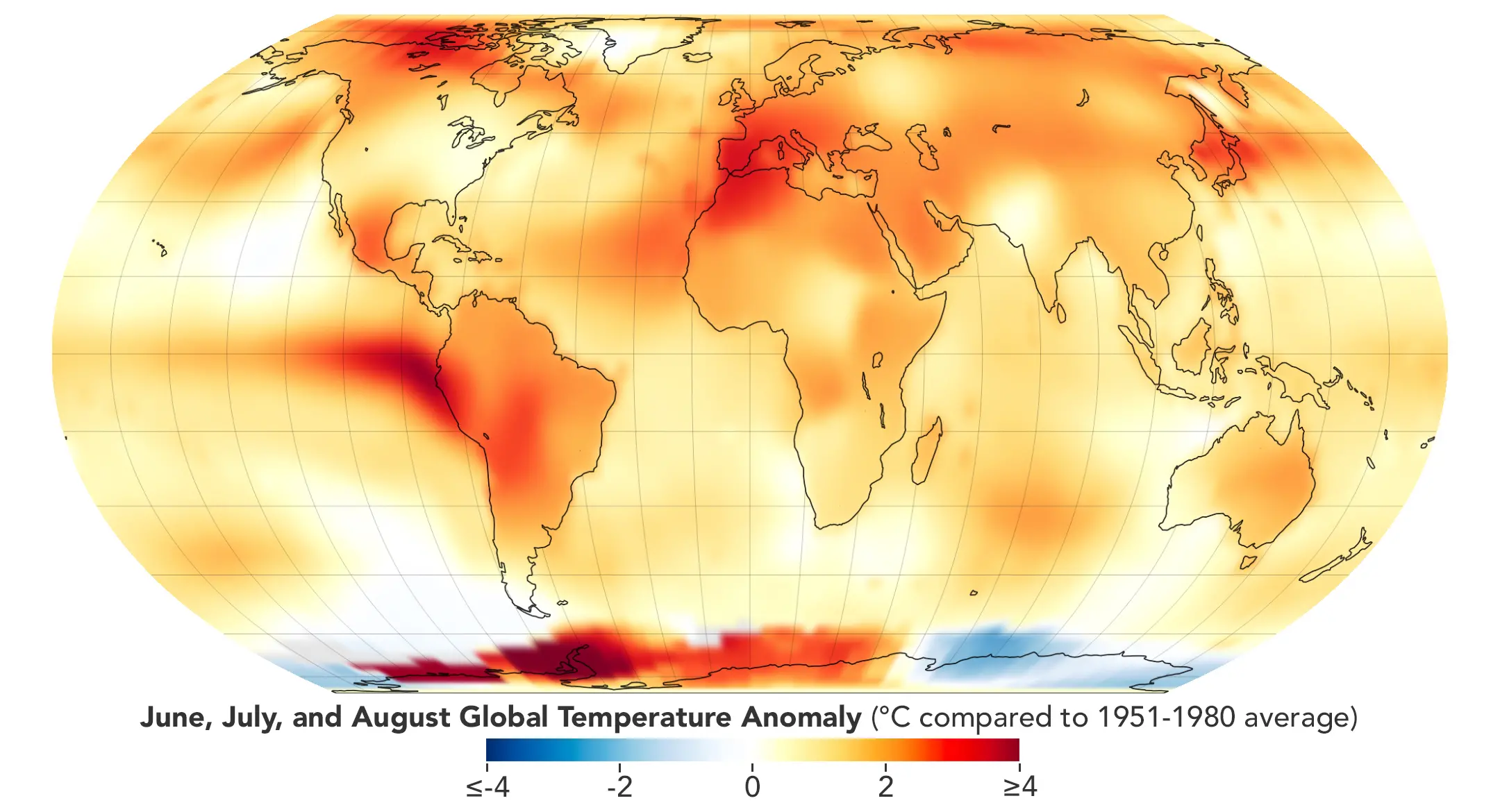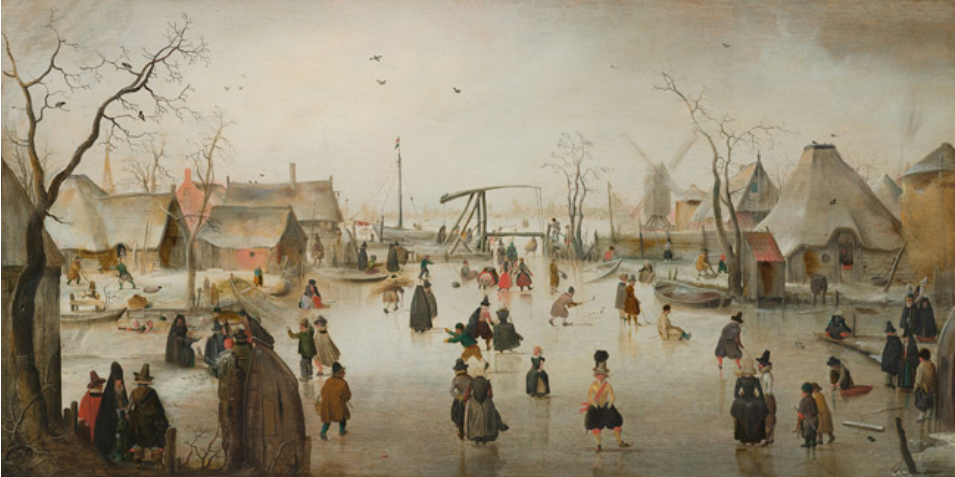By Dimitris Kouvaras,
Climate change is undoubtedly a topic as hot as the temperatures it produces. Its conceptual undertones, though, are remarkably distinct compared to most other references to climate in, say, “ordinary” discourse. In most of these instances, climate is referred to as a set of geographically variant yet locally coherent, generally stable, and predictable weather patterns, sort of like a stage in which the drama of human activity takes place. Climate change, on the other hand, conceptualises climate in its interrelation to human activity, rendering not a fixed stage but one which humans shape and are shaped by οn a global scale, no matter the conventional climate zones. However, this distinction could be elusive to a certain extent. Climate change might indeed be a sharp and ominous cut in the interrelation between humans and climate, burdening the former with grave responsibility, yet this does not imply that the given relation had always been stable or inconsequential. In this article, I will turn to a lesser known and not so distant -considering the scope of human history- phenomenon, whose examination can elucidate the workings of human-climate interaction as a bilateral one, yet also confirm the consequential historic anomaly of climate change.
This climatic event is no other than the Little Ice Age, and it has nothing to do with the famous motion picture or the prehistoric world it depicts, which are what likely comes to mind once the Ice Age is mentioned. On the contrary, it was a relatively recent yet prolonged climatic shift taking place from the 14th to the mid-19th century and experienced variously across the world. It peaked in the period after 1570 and throughout the 17th century, with global temperatures dropping over two degrees Celsius. Prolonged winters, failed harvests and extensive ice coverage were some of the experiences of the period, which put considerable strain on human societies at the time. As for its causes, it was likely an effect of decreased solar activity, leading to less energy reaching the Earth, and increased emissions from volcanic eruptions, which blocked the sunlight and led to lower temperatures. However, there is also a suggested, although contested, causal link with the aftermath of human activity. During the 16th century, following the advent of European colonizers in the Americas, their “guns, germs, and steel” led to the decimation of about 90% of the indigenous population, mostly by the spread of European diseases. This loss of millions, along with the temporary loss of their cultivations, which were reclaimed by forestland, enabled a heightened oxygen release in the atmosphere contributing to the cooler climate.

Despite its hypothetical character, this assertion exemplifies the bilateral nature of the relation between humans and the climate, which precedes the modern period and is way more evident in the socioeconomic effects of the global cooling as well as warming as now experienced. In Europe, where most examined sources originate from, strains on the grain supply created socioeconomic tensions. Providential interpretations of the climatic destabilisation created existential agony, and superstition combined with increased poverty, lack of welfare, and neighbourly antagonisms to induce a spike in witch hunts, often relating to purported “weather magic”. In the economic field, grain supply faced severe challenges, causing food riots and an agricultural crisis with manifold consequences. The agricultural market squeezed, while good shortages and fluctuating prices incentivised tendencies of diversification, interregional exchange, and supplementary income to be found in proto-industrial textile production. Together with socioeconomic developments, the cooling climate set the stage for a transformation in structures of production and dissemination of goods, as societies struggled to adapt. On the other hand, it enabled new social settings, such as the London fairies on the frozen Thames and the ice-skating occasions depicted in early modern paintings.
This climatic precedent points to a reconceptualization of climate as less of a stage for human activity and more of an evolving system mutually interacting with the latter. Reverting to even larger, almost geological timescales, one observes that Earth’s climate has been fluctuating between glacial periods and warmer phases over hundreds of thousands of years, with anthropoids and humans having experienced both. In fact, there is a stark correlation between the developments of human civilisation as we know it and the end of the last so-called “ice age” in the 12th century BCE, with the ensuant warming enabling sedentary agriculture and the Neolithic revolution. Our species has adapted and responded to a changing climate for millennia, and history itself might be -at least in part- the wider product of that response. We are not alone in phasing destabilised climatic conditions, and we are not the only ones that have had to be agile and resilient to make it through. This consideration is crucial in offering a somewhat optimistic lens amidst the current climate struggle against nihilistic resignation.
However, what this precedent also indicates are the peculiarities of the current climatic shift. With a rise in mean temperature of over a degree Celsius since 1880, global warming is an alarmingly unusual climate trend progressing at an alarmingly rapid pace. Geological time is no match for contemporary rampant temperature rise. However, what is more important and largely unprecedented is the starkly anthropogenic cause of modern climate change, amounting to industrial activity, biodiversity loss, and gas emissions. The bilateral relation between humans and the climate has now taken almost the form of a feedback loop, whose inputs pertain greatly to the human factor and whose climatic outputs are increasingly unpredictable. As human activity has been shown to transform the environment to a never-before-seen extent, a term has emerged highlighting human influence while echoing geological time classifications: the Anthropocene. Crucially, this could point to yet another factor singular in modern climate change, which is the widespread consciousness of its anthropogenic workings. Unlike early modern colonizers, modern industrialists know that it is their activities that warm the planet up, also scientifically being able to know how it does so. Never in history were the direction and interrelation of the human-climatic link as conscious and verified as now.

On the positive side, this realisation reveals that we are left with an advantage, as we are privileged enough to scientifically ascertain the causes and remedies of climate change. However, it also pressingly suggests that we are left with great responsibility over managing the crisis that we created before we ripe its destructive fruit. Time is running out. What complicates human response -besides considerations of profit and power dynamics- is that the contemporary socioeconomic and cultural edifice resting on the environmentally problematic foundation is immense and its guarantees in commodities, transport, entertainment, and all aspects of life are difficult to cede. Still, the example of the Little Ice Age shows that structural social changes are possible, even without a scientific grasp of the phenomenon in question. It is time we seize our advantage in knowledge and consciousness and confront our warming climate by adjusting our socioeconomic modes and structures to the demands of the environmental equilibrium, doing justice to the agility humans have shown for millennia and, crucially, also just a few centuries ago.
References
- How the Little Ice Age Changed History. The New Yorker. Available here
- Climate crisis: what lessons can we learn from the last great cooling-off period? The Guardian Available here
- World of Change: Global Temperatures. NASA Earth Observatory. Available here




